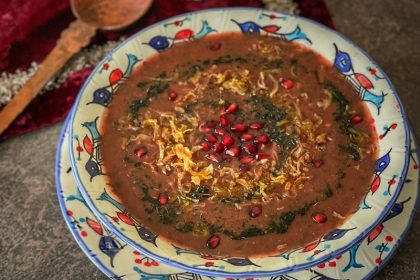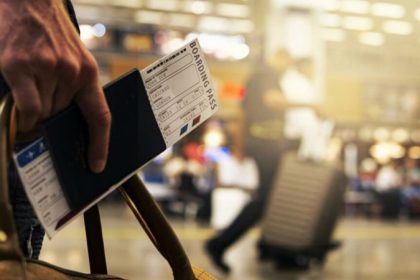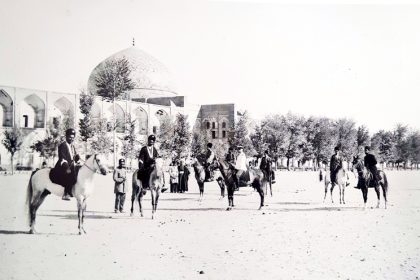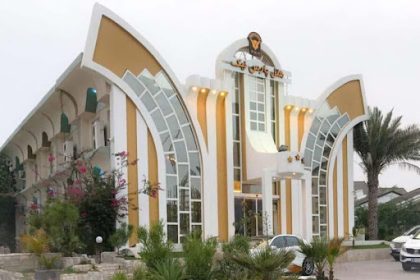Do you know which continent the Philippines is on? Have you ever traveled to this beautiful country? The Philippines is one of the attractive tourist destinations for those who love nature and want to spend a few days away from the hustle and bustle. By traveling to the Philippine Islands, you will see different landscapes; From bustling cities to quiet beaches and stunning mountain views. In this article, we will introduce you to this Asian country and its most popular areas. Stay with us.
Introducing the Philippines
The Philippines is an archipelago in Southeast Asia and the Western Pacific Ocean. This country has more than 7000 islands that are located 800 kilometers off the coast of Vietnam. Manila is the capital of the Philippines and Quezon City is the most populous city in the southeast of the Philippine archipelago.
In the 16th century, the king of Spain, Philip II, colonized this archipelago and the name of the country is taken from this king. The Philippines has been a colony of Spain and under the trusteeship of the United States of America for many years; For this reason, it has many cultural affinities with the West. This country is rich in resources and has the potential to create a strong industrial economy, but most people’s occupation is still agriculture.
The government of the Philippines is democratic and based on the constitution. The President of the Philippines is both the head of the government and the commander of the armed forces of the country. The president is elected by the people and can remain in this position for only 1 term of 6 years.
Geography
The Philippine archipelago is bounded by the Philippine Sea to the east, the Celebes Sea to the south, the Sulu Sea to the southwest, and the South China Sea to the west and north. The total number of islands in this archipelago was 7,107, but in 2016, the Philippine National Mapping and Resource Information Agency announced that there are more than 500 islands in the country that have not been discovered before. The big islands of the Philippines are divided into 3 groups:
- Luzon group in the north and west: Consists of Luzon, Mindoro and Palawan.
- Visayas group in the center: Consists of Bohol, Cebu, Leyte, Masbate, Negros, Panay and Samar.
- Mindanao group in the south.
Climate
The climate of the Philippines is tropical and highly monsoonal, meaning it is wet in some seasons and dry in others. Rain-producing winds from the southwest blow from May to October and drier winds from the northeast from November to February. The dry season usually starts from December and ends in May. The first 3 months of this season are cool and the second 3 months are hot. The rest of the year is the Philippines’ wet season, so November to February is the best season to visit the country. During these months, the air cools down at night and has little humidity. The days are pleasant and sunny.
People
The people of the Philippines are ethnically diverse, but collectively they are called Filipinos. The ancestors of most people were of Malay descent and came to these islands from Southeast Asia and Indonesia. Contemporary Filipino society is made up of about 100 distinct ethnic groups.
The language of the people of the Philippines is mostly Filipino and English, but according to sociological research, about 150 languages are common in this country. The roots of some languages go back to the Asian ancestors of the people of the Philippines, and others have Spanish and English roots. There are many dialects and accents in this country, but almost all people can speak English.
Most people in the Philippines are Catholic Christians. Followers of other Christian sects make up almost one tenth of the population. Islam also entered the Philippines from Brunei in the 15th century, and today about 5% of the population are Muslims, who mostly live in the southern islands. A small number of Filipinos also follow Buddhism or local religions.
The population density of the Philippines is high but the population distribution is uneven. The population density of parts of Manila is 100 times that of some remote areas such as the mountains of northern Luzon. The birth rate of this country is significantly higher than the global average as well as the average of Southeast Asia. More than 80% of the population at the beginning of the 20th century were rural people, but in the early 21st century this number decreased to 40%. In rural areas, houses are often small and have only one or two rooms. In the bigger cities there is a sharp class difference. Rich people live in multi-story houses, but a large part of people are still stuck in poverty. They occupy every piece of vacant land and build shelters with wood, sheet metal, bamboo and other discarded materials. These people do not have access to water, electricity or health services.
Economy
Agriculture, forestry and fishing are common economic activities in the Philippines. One of the most important products of the Philippines is rice, but local farmers also grow sugarcane, bananas, coconuts, corn, pineapples, mangoes, citrus fruits, and papayas. They also export some of these products.
Fish plays an important role in the nutrition of the Filipino people and provides protein in their diet. Filipinos have been fishing for a long time, but since the early 1990s, the industry has been growing. Canned tuna is the main export product of this country. In addition, lionfish, sardines, anchovies and other seafood are also exported.
Years ago, about half of the land in the Philippines was forested and covered with various trees. Most of the trees in these areas had commercial value, but over the past years this natural fabric has been endangered. Indiscriminate cutting of trees and inadequate reforestation measures have caused irreparable damage to the forests of the Philippines. The Philippine government has banned timber exports since the mid-1980s, but valuable timber from Philippine forests continues to be illegally exported.
Culture
Philippine society is culturally unique. People are homogenous and similar to each other despite their many differences. Geographically, the Philippines is part of Southeast Asia, but culturally, it is closer to Europe and America. Western countries have ruled this archipelago for about 4 centuries and have left an indelible mark on the Philippines, but the educated class of this country has always tried to preserve its Asian identity and stick to its cultural heritage.
Life in the Philippines revolves around family. Filipinos value family relationships and most of their customs are held in family gatherings. Most of the important events of Filipinos are related to their religion. Catholics have their own baptisms and weddings and Muslims have their own celebrations, but some holidays are official in the Philippines. Christmas, Easter, Eid al-Fitr, New Year’s Day, Labor Day and Philippine Independence Day are the official celebrations of this country.
Today, Filipinos dress like modern western countries, but in some areas it is still common to wear native clothes. Men in these areas wear an embroidered shirt called a barong for formal events. Philippine women also wear a long dress with wide sleeves that covers them from the shoulders to the elbows.
Tourism
The Philippines is a tourist country that millions of tourists visit every year. Most of the travelers in this country come from South Korea, America and Japan. In recent years, the number of Asian tourists has increased. This country is one of the beautiful and popular destinations among Iranians, because it is relatively close and it does not cost that much to travel there. Of course, the cost of traveling to the Philippines is completely dependent on the type of travel.
Due to the progress of the Philippines, the number of immigrants to this country has also increased. There are several ways to obtain Philippine residency. The Philippines offers a variety of study and work visas to those who intend to live in this country.
Sights of the Philippines
The Philippines is a beautiful and diverse country for tourists. Whether you are looking for exciting adventures or want to spend a few days in peace and quiet, the Philippines is the right choice for your vacation. In this archipelago, you can experience diving and cave climbing with sharks or walk on white sandy beaches and immerse yourself in the architecture of colonial churches. The hospitality of the people and the delicious food of this country will make your trip more memorable. Next, we review the most popular places to visit in the Philippines.
1. Manila
Manila, the capital of the Philippines, is known as the “Pearl of the East”. Manila Bay is one of the largest ports in the world and one of the most important commercial cities in the Philippines. Mangrove forests surround this bay and create a pleasant environment for spending holidays. The calm waters of Manila Bay and the view of the sunset in this city create a dreamy atmosphere for you to enjoy your vacation.
You will have a lot of fun in the historic city of Manila. There are many museums, parks, theaters, shopping malls and restaurants in Manila where tourists spend their time. If you visit this city, don’t be afraid to try new foods. Manila is famous for its local markets and delicious street food. Legazpi Sunday Market, Quiapo Market and Chinatown are the best places to eat new and delicious Filipino food.
2. Cebu

Cebu is a port city in the Philippines. In this city, you can see the calmness of the beaches and the hustle and bustle of modern life at the same time; For this reason, it is considered one of the most important tourist destinations of this country. Every year, many foreign and domestic travelers visit Cebu and spend their holidays in this beautiful city. Cebu is a historical city and is said to be one of the origins of Christianity in the Philippines.
Cebu’s historical monuments are a fusion of Filipino culture and Spanish architecture that you can spend hours in without getting bored. If you prefer to have an adventurous trip, it is better to visit the outskirts of Cebu. On the beaches of this city, you can try swimming next to sea creatures or canyoning in Kawasan waterfall. Cebu’s climate is warm and tropical, and monsoon rains fall most days of the year.
3. Saint Augustine Church

San Agustin Church is one of the oldest churches in the Philippines. This building was built in 1586 and UNESCO declared it a world heritage. The design of this church is in Baroque style and the influence of Spanish and Chinese architecture can be seen in it. The doors of the church have intricate carvings and stunning beauty. Over the years, this building has been renovated many times. The last renovation of San Agustin was done in 2013. San Agustin Church is one of the tourist attractions in the Philippines that you should not miss.
4. National Museum of the Philippines

If you want to learn about the culture, history and customs of the Philippines, visit the National Museum of the Philippines. This museum has 4 main sections where a complete collection from all over the world is gathered. You can see works in the field of natural history, archeology, zoology, anthropology and art of this country in the National Museum. The Philippine government believes that all people should have an opportunity to get to know the different cultural aspects of this country; For this reason, there is no entrance fee to visit the National Museum and visitors can visit it for free.
5. Chocolate hills

The chocolate hills located in the Carmen region of Bahl Island are one of the most spectacular places in the Philippines. These hills are spread over an area of 50 square kilometers and have created a mesmerizing view. Chocolate hills have a strange shape. These hills are high cones that are all similar to each other. During the dry seasons, the green grass of this area dries up completely and turns a light brown color, and that is why it is known as the Chocolate Hills.
6. Banaue terraced rice fields

The terraced rice fields of Banaue used to be just winding fields on the side of the mountain. The local people had left this area and it did not prosper, but today young farmers have returned to these paddy fields. The new generation of farmers are reviving these farms and have turned it into one of the sights of the Philippines. They use the method of their ancestors to irrigate the fields and bring water to the paddy fields from the top of the ice-covered mountains. This water supply technique is a sign of the advanced engineering skills of the ancients of this region. In 1995, UNESCO declared the Banaue rice fields as a world heritage and today it has many visitors.
7. Puerto Princesa National Park

Puerto Princesa National Park is a tourist attraction for nature lovers. This park is only one hour away from downtown Porto-Prince. Puerto Princesa National Park has a variety of flora and fauna and was selected as one of the New Seven Wonders in 2012. Every year, millions of tourists travel to the Philippines to see this beautiful park. During a visit to this park, tourists board a rowboat and pass through a fascinating cave with stunning stalactites and stalagmites and an underground river.
8. Siargao

Siargao is a small island that looks like a teardrop and is one of the most famous sights in the Philippines. The beach of Siargao Island has fine white sand and turquoise water runs along its coastline. This beach is one of the most popular spots for surfing and diving. Near the beach, there are beautiful coral reefs, which are one of the natural attractions of this city. Siargao also has several waterfalls and lagoons. If you are not interested in diving and surfing, you can visit these places and spend hours in peace. Caving is another popular activity on Siargao Island that makes for an exciting trip.
9. Samal

Samal is one of the largest islands in the Philippines. There are many entertainments in Samal and you will not be bored at all. Hagimit waterfall is one of the sights of Samal and many tourists travel to it to relax. You can sit and enjoy long hours on the white beach of this island, next to the calm waters. Diving, cave climbing and fishing are other activities of this island. One of the natural wonders of Samal Island is the effect of tides on the beach sand. About 80 hectares of the island’s surface goes under water during high tide and emerges during low tide. You will feel joy and happiness all over the island of Samal.
10. Crohn’s

Coron is the third largest island in the Philippines. In Krone, you can see the high limestone peaks that have been created on nested caves. You can spend a few hours exploring between these caves and peaks and have an adventure. If you are also interested in diving, this island is an attractive destination for you. Clear water, colorful coral reefs and sunken Japanese ship near Krone Beach are among the tourist attractions of this beautiful island. The climate of Krone Island is hot and coconut and mango trees can be seen in some areas of the coast. In addition, there are several lakes and lagoons in Krone, which is a dream destination for tourists.
11. Tagaytay

Tagaytay is very popular among the places to visit in the Philippines. Tagaytay is a high city overlooking Taal Lake. Taal Lake and Volcano are one of the natural attractions of the Philippines and you can watch its view for hours. Tagaytay has pleasant weather and various sightseeing spots. The tranquility of the island is very suitable for tourists who want to relax for a few days away from stress. Another famous place in Tagaytay is Sonia Garden. In this garden, you will find a romantic and peaceful atmosphere away from the crowd and you will enjoy delicious local food.
last word
The Philippines is an alluring destination with natural wonders and a rich culture that beckons tourists from all over the world. By traveling to this country, you will see stunning sights that will remain in your memory forever. Also, this country is a land of diversity; In the Philippines, you can see different languages, religions and cultures, all of which have peacefully and together created the warm spirit of the Philippine archipelago.
If you have traveled to these beautiful islands in the past, share your experiences with us.

Learn the formula of happiness and positive thinking and say goodbye to depression

Practical principles and methods for fast and lasting learning Any new language
RCO NEWS

















